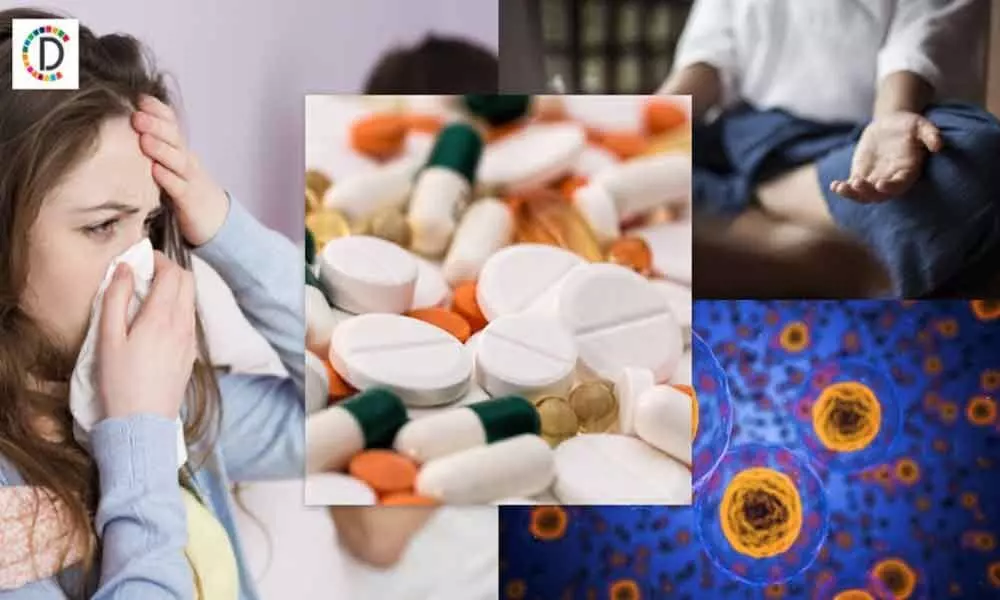Live
- Garena Free Fire MAX Redeem Codes for December 2024: Unlock Skins, Weapons, and More
- Dr. Ponguleti Sudhakar Reddy Welcomes Union Minister Piyush Goyal in Bengaluru
- Why Christmas is Celebrated on December 25: The Link to Roman Festivals
- Tributes paid to G Venkataswamy (Kaka)
- Amit Shah should quit; demand MP, MLA
- Hike in support price brings cheer to coconut farmers
- Apple's Face ID Smart Doorbell Could Unlock Doors by Late 2025
- Amit Shah must tender apology
- Govt’s focus on rural and tribal health: Minister Damodar
- Ramanujan’s birth anniversary celebrated
Just In
India's adolescents have low levels of insufficient physical activity: Lancet study


India is among the countries with the lowest levels of insufficient physical activity in adolescents, according to a WHO-led study published on Friday.
Geneva: India is among the countries with the lowest levels of insufficient physical activity in adolescents, according to a WHO-led study published on Friday.
The study, published in The Lancet Child & Adolescent Health journal, found that more than 80 per cent of school-going adolescents globally did not meet current recommendations of at least one hour of physical activity per day -- including 85 per cent of girls and 78 per cent of boys. The first-ever global trends for adolescent insufficient physical activity led by researchers from the World Health Organization (WHO) show that urgent action is needed to increase physical activity levels in girls and boys aged 11 to 17 years.
Some of the lowest levels of insufficient activity in boys were found in Bangladesh, India and the US, according to the study. The researchers note that the lower levels of insufficient physical activity in Bangladesh and India -- where 63 per cent and 72 per cent of boys were insufficiently active in 2016, respectively - may be explained by the strong focus on national sports like cricket.
The US rates (64 per cent) may be driven by good physical education in schools, pervasive media coverage of sports, and good availability of sports clubs - such as ice hockey, American football, basketball, or baseball, they said. For girls, the lowest levels of insufficient activity were seen in Bangladesh and India, and are potentially explained by societal factors, such as increased domestic chores at home, according to the study. In 2016, the Philippines was the country with the highest prevalence of insufficient activity among boys (93 per cent), whereas South Korea showed highest levels among girls (97 per cent) and both genders combined (94 per cent).
Bangladesh was the country with the lowest prevalence of insufficient physical activity among boys, girls, and both genders combined. The study is based on data reported by 1.6 million 11 to 17-year-old students. It found that across all 146 countries studied between 2001-2016, girls were less active than boys in all but four nations -- Tonga, Samoa, Afghanistan and Zambia. The difference in the proportion of boys and girls meeting the recommendations was greater than 10 percentage points in almost one in three countries in 2016 (29 per cent), with the biggest gaps seen in the US and Ireland (more than 15 percentage points). Most countries in the study (73 per cent) saw this gender gap widen between 2001 and 2016.
The researchers said that the levels of insufficient physical activity in adolescents continue to be extremely high, compromising their current and future health. "Urgent policy action to increase physical activity is needed now, particularly to promote and retain girls' participation in physical activity," said study author Regina Guthold from the WHO. The health benefits of a physically active lifestyle during adolescence include improved cardiorespiratory and muscular fitness, bone and cardiometabolic health, and positive effects on weight.
There is also growing evidence that physical activity has a positive impact on cognitive development and socialising. Current evidence suggests that many of these benefits continue into adulthood, the researchers said. To achieve these benefits, the WHO recommends for adolescents to do moderate or vigorous physical activity for an hour or more each day. The new study estimated for the first time how trends changed between 2001 and 2016 -- applying the trends from 73 countries who did repeat surveys during that period in all the 146 countries.
Globally, the prevalence of insufficient physical activity slightly decreased in boys between 2001 and 2016 (from 80 per cent to 78 per cent), but there was no change over time among girls (remaining around 85 per cent). The researchers note that based on the current trends, the global target of a 15 per cent relative reduction in insufficient physical activity by 2030 will not be achieved. This target was agreed to by all countries at the World Health Assembly in 2018, the WHO noted.

© 2024 Hyderabad Media House Limited/The Hans India. All rights reserved. Powered by hocalwire.com






